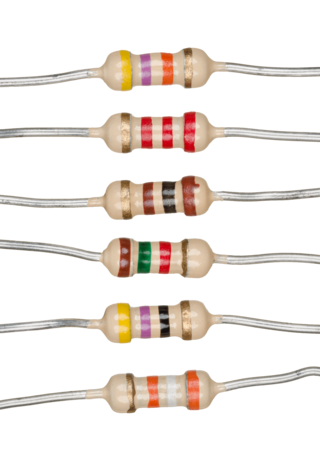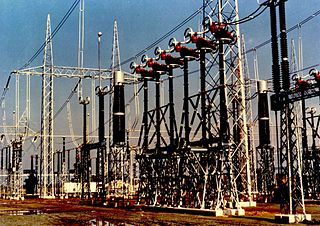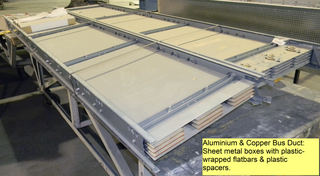Characteristics
MIL-STD-1553B specifies the transformer characteristics and turns ratio of 1.4:1 with the higher turns on the isolation resistor side of the stub. The MIL-STD-1553B also specifies the isolation resistors that are placed in series with each connection to the bus. Normally bus couplers are available with 1.4:1 transformer ratios and 59 ohm (2 watt 1%) resistors. For special applications, couplers can be supplied with different transformer ratios (e.g., 1:1) and other resistance values (e.g., 54.9 ohms).
Bus coupler configurations are available as non-terminated or internally terminated. If two or more non-terminated couplers are used on a bus, then the couplers at each end of the bus must be terminated externally with 78-ohm terminators on the unused bus connections of the end couplers. Alternately, internally single-terminated couplers (with or without the non-functional bus connectors) can be supplied.
Even if only one non-terminated coupler acts as the bus because all devices (bus controller, remote terminals, etc.) are connected to the coupler stubs, the external bus connections of the coupler must be terminated. A dual-terminated coupler (with or without non-functional bus connectors) can be employed where the coupler acts as the bus without other couplers. RFI dust caps (with or without safety chains) are recommended for all unused stub ports. Data bus couplers are readily available in 2 through 8 stubs and in various sizes and shapes of boxes and slim inline models. Also, a variety of connectors are offered with couplers.

A resistor is a passive two-terminal electrical component that implements electrical resistance as a circuit element. In electronic circuits, resistors are used to reduce current flow, adjust signal levels, to divide voltages, bias active elements, and terminate transmission lines, among other uses. High-power resistors that can dissipate many watts of electrical power as heat may be used as part of motor controls, in power distribution systems, or as test loads for generators. Fixed resistors have resistances that only change slightly with temperature, time or operating voltage. Variable resistors can be used to adjust circuit elements, or as sensing devices for heat, light, humidity, force, or chemical activity.

In electrical engineering, ground or earth may be a reference point in an electrical circuit from which voltages are measured, a common return path for electric current, or a direct physical connection to the Earth.

In electrical engineering, impedance matching is the practice of designing or adjusting the input impedance or output impedance of an electrical device for a desired value. Often, the desired value is selected to maximize power transfer or minimize signal reflection. For example, impedance matching typically is used to improve power transfer from a radio transmitter via the interconnecting transmission line to the antenna. Signals on a transmission line will be transmitted without reflections if the transmission line is terminated with a matching impedance.

In electronics, electrical termination is the practice of ending a transmission line with a device that matches the characteristic impedance of the line. Termination prevents signals from reflecting off the end of the transmission line. Reflections at the ends of unterminated transmission lines cause distortion, which can produce ambiguous digital signal levels and misoperation of digital systems. Reflections in analog signal systems cause such effects as video ghosting, or power loss in radio transmitter transmission lines.

An isolation transformer is a transformer used to transfer electrical power from a source of alternating current (AC) power to some equipment or device while isolating the powered device from the power source, usually for safety reasons or to reduce transients and harmonics. Isolation transformers provide galvanic isolation; no conductive path is present between source and load. This isolation is used to protect against electric shock, to suppress electrical noise in sensitive devices, or to transfer power between two circuits which must not be connected. A transformer sold for isolation is often built with special insulation between primary and secondary, and is specified to withstand a high voltage between windings.
A distribution board is a component of an electricity supply system that divides an electrical power feed into subsidiary circuits while providing a protective fuse or circuit breaker for each circuit in a common enclosure. Normally, a main switch, and in recent boards, one or more residual-current devices (RCDs) or residual current breakers with overcurrent protection (RCBOs) are also incorporated.

In electric power distribution, a busbar is a metallic strip or bar, typically housed inside switchgear, panel boards, and busway enclosures for local high current power distribution. They are also used to connect high voltage equipment at electrical switchyards, and low voltage equipment in battery banks. They are generally uninsulated, and have sufficient stiffness to be supported in air by insulated pillars. These features allow sufficient cooling of the conductors, and the ability to tap in at various points without creating a new joint.

A current transformer (CT) is a type of transformer that is used to reduce or multiply an alternating current (AC). It produces a current in its secondary which is proportional to the current in its primary.
MIL-STD-1553 is a military standard published by the United States Department of Defense that defines the mechanical, electrical, and functional characteristics of a serial data bus. It was originally designed as an avionic data bus for use with military avionics, but has also become commonly used in spacecraft on-board data handling (OBDH) subsystems, both military and civil, including use on the James Webb space telescope. It features multiple redundant balanced line physical layers, a (differential) network interface, time-division multiplexing, half-duplex command/response protocol, and can handle up to 31 Remote Terminals (devices); 32 is typically designated for broadcast messages. A version of MIL-STD-1553 using optical cabling in place of electrical is known as MIL-STD-1773.

In an electric power system, a switchgear is composed of electrical disconnect switches, fuses or circuit breakers used to control, protect and isolate electrical equipment. Switchgear is used both to de-energize equipment to allow work to be done and to clear faults downstream. This type of equipment is directly linked to the reliability of the electricity supply.
A shunt is a device that is designed to provide a low-resistance path for an electrical current in a circuit. It is typically used to divert current away from a system or component in order to prevent overcurrent. Electrical shunts are commonly used in a variety of applications including power distribution systems, electrical measurement systems, automotive and marine applications.

Galvanic isolation is a principle of isolating functional sections of electrical systems to prevent current flow; no direct conduction path is permitted.

A test probe is a physical device used to connect electronic test equipment to a device under test (DUT). Test probes range from very simple, robust devices to complex probes that are sophisticated, expensive, and fragile. Specific types include test prods, oscilloscope probes and current probes. A test probe is often supplied as a test lead, which includes the probe, cable and terminating connector.

Twinaxial cabling, or twinax, is a type of cable similar to coaxial cable, but with two inner conductors in a twisted pair instead of one. Due to cost efficiency it is becoming common in modern (2013) very-short-range high-speed differential signaling applications.
MIL-STD-1760 Aircraft/Store Electrical Interconnection System defines a standardized electrical interface between a military aircraft and its carriage stores. Carriage stores range from weapons, such as GBU-31 JDAM, to pods, such as AN/AAQ-14 LANTIRN, to drop tanks. Prior to adoption and widespread use of MIL-STD-1760, new store types were added to aircraft using dissimilar, proprietary interfaces. This greatly complicated the aircraft equipment used to control and monitor the store while it was attached to the aircraft: the stores management system, or SMS.
A Kelvin bridge, also called a Kelvin double bridge and in some countries a Thomson bridge, is a measuring instrument used to measure unknown electrical resistors below 1 ohm. It is specifically designed to measure resistors that are constructed as four terminal resistors.

A concentric twinax connector has a center pin and a cylindrical intermediate contact as compared to a dual polarized pin type.
MIL-STD-1397 standard was issued by the United States Department of Defense (DoD) to define "the requirements for the physical, functional and electrical characteristics of a standard I/O data interface for digital data." The MIL-STD-1397 classification types A, B and D apply specifically to the Naval Tactical Data System (NTDS).
STANAG 3910High Speed Data Transmission Under STANAG 3838 or Fibre Optic Equivalent Control is a protocol defined in a NATO Standardization Agreement for the transfer of data, principally intended for use in avionic systems. STANAG 3910 allows a 1 Mb/s STANAG 3838 / MIL-STD-1553B / MoD Def Stan 00-18 Pt 2 (3838/1553B) data bus to be augmented with a 20 Mb/s high-speed (HS) bus, which is referred to in the standard as the HS channel: the 3838/1553B bus in an implementation of STANAG 3910 is then referred to as the low-speed (LS) channel. Either or both channels may be multiply redundant, and may use either electrical or optical media. Where the channels use redundant media, these are individually referred to as buses by the standard.

In electric power distribution, a bus duct typically uses sheet metal, welded metal or cast resin to contain and isolate copper or aluminium busbars for the purpose of conducting a substantial current of electricity. It is an alternative means of conducting electricity to power cables or cable bus.












